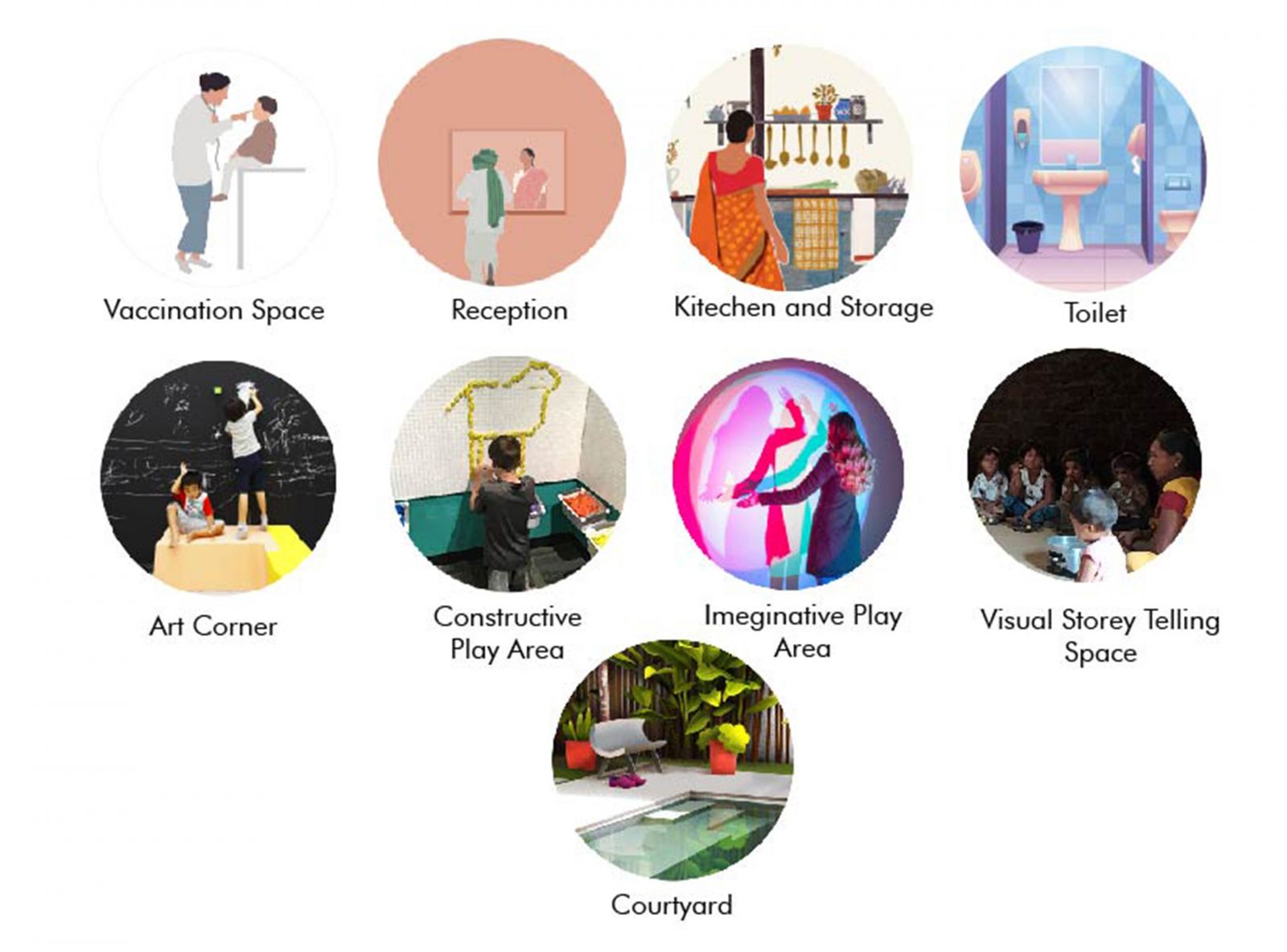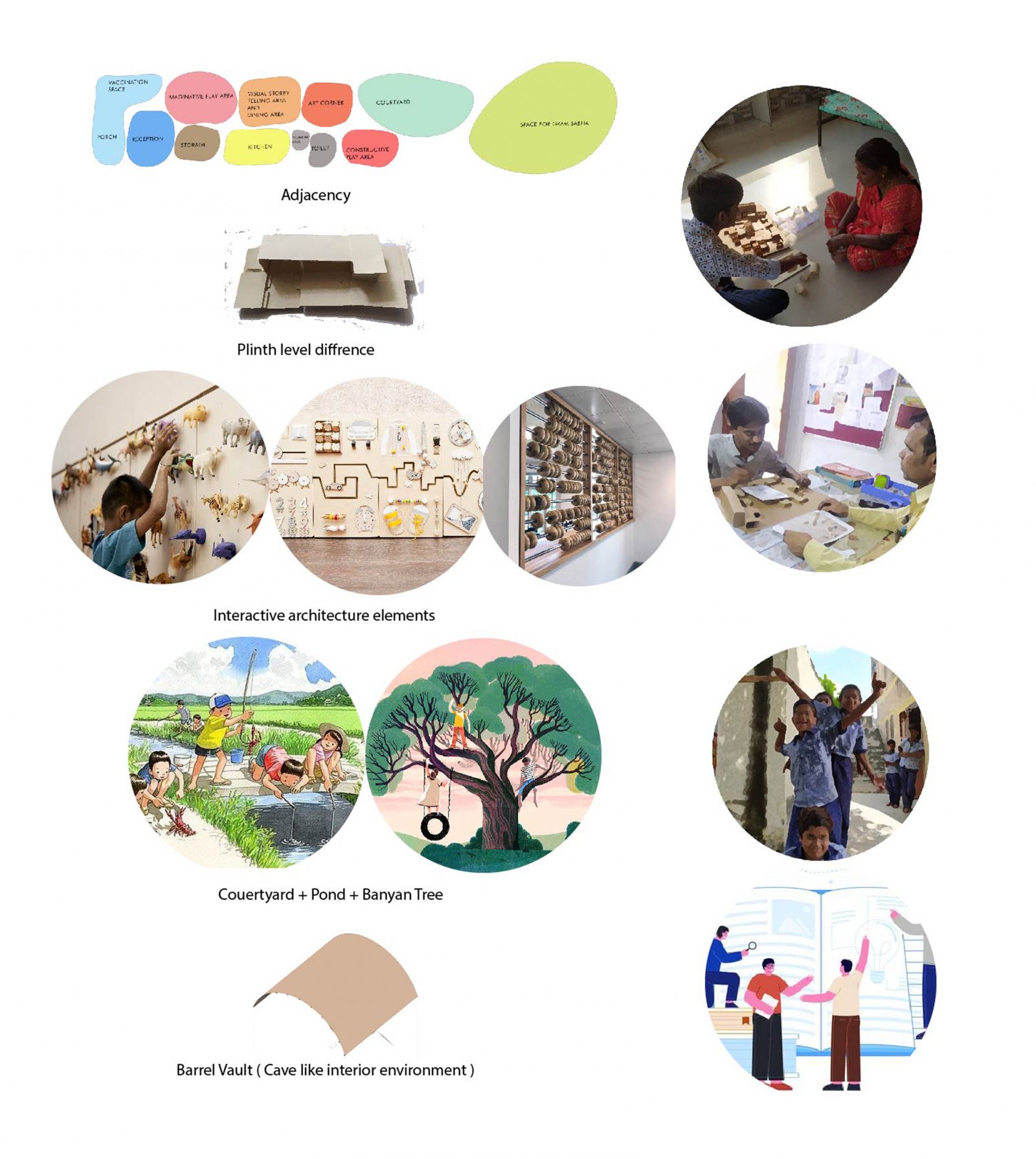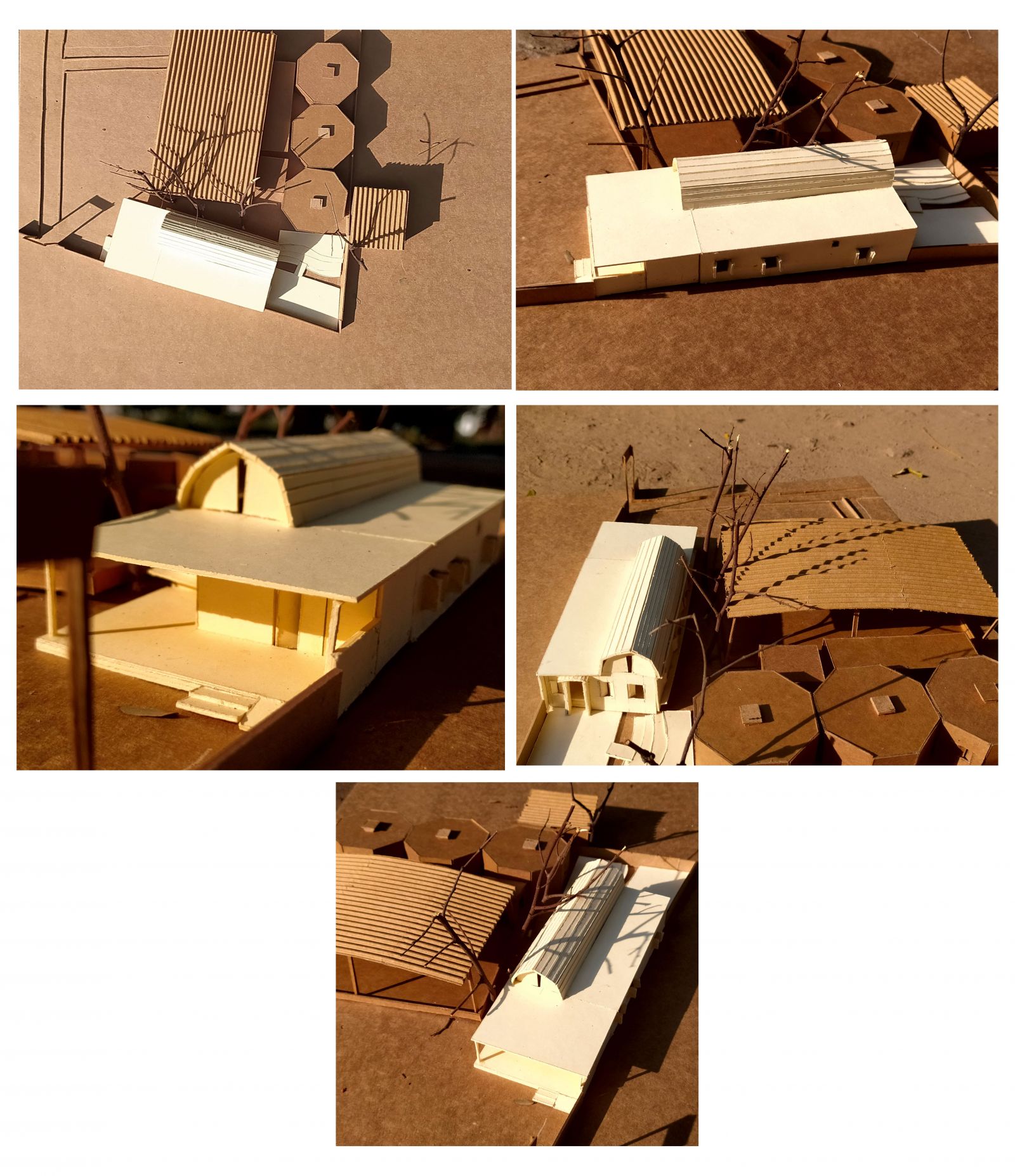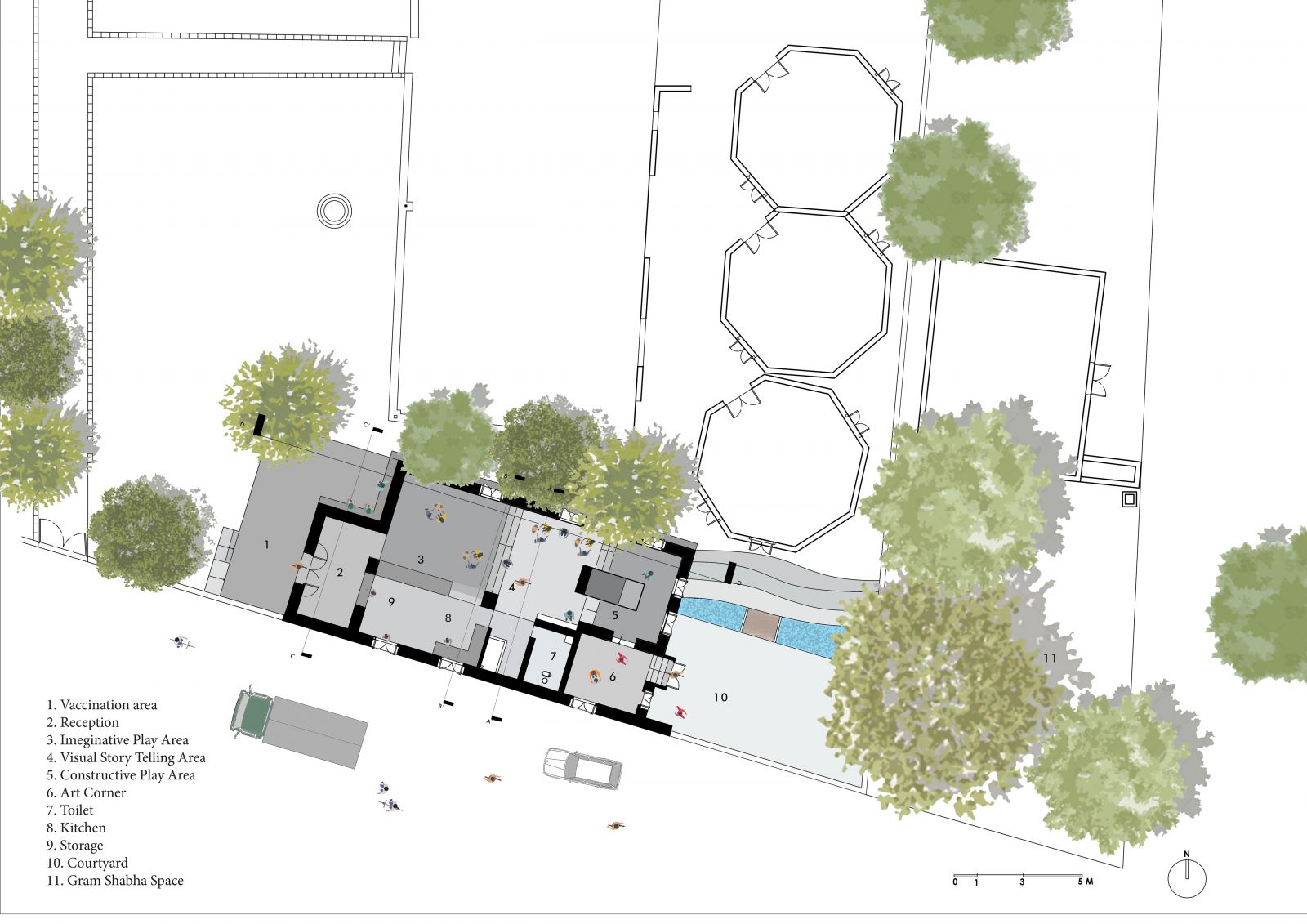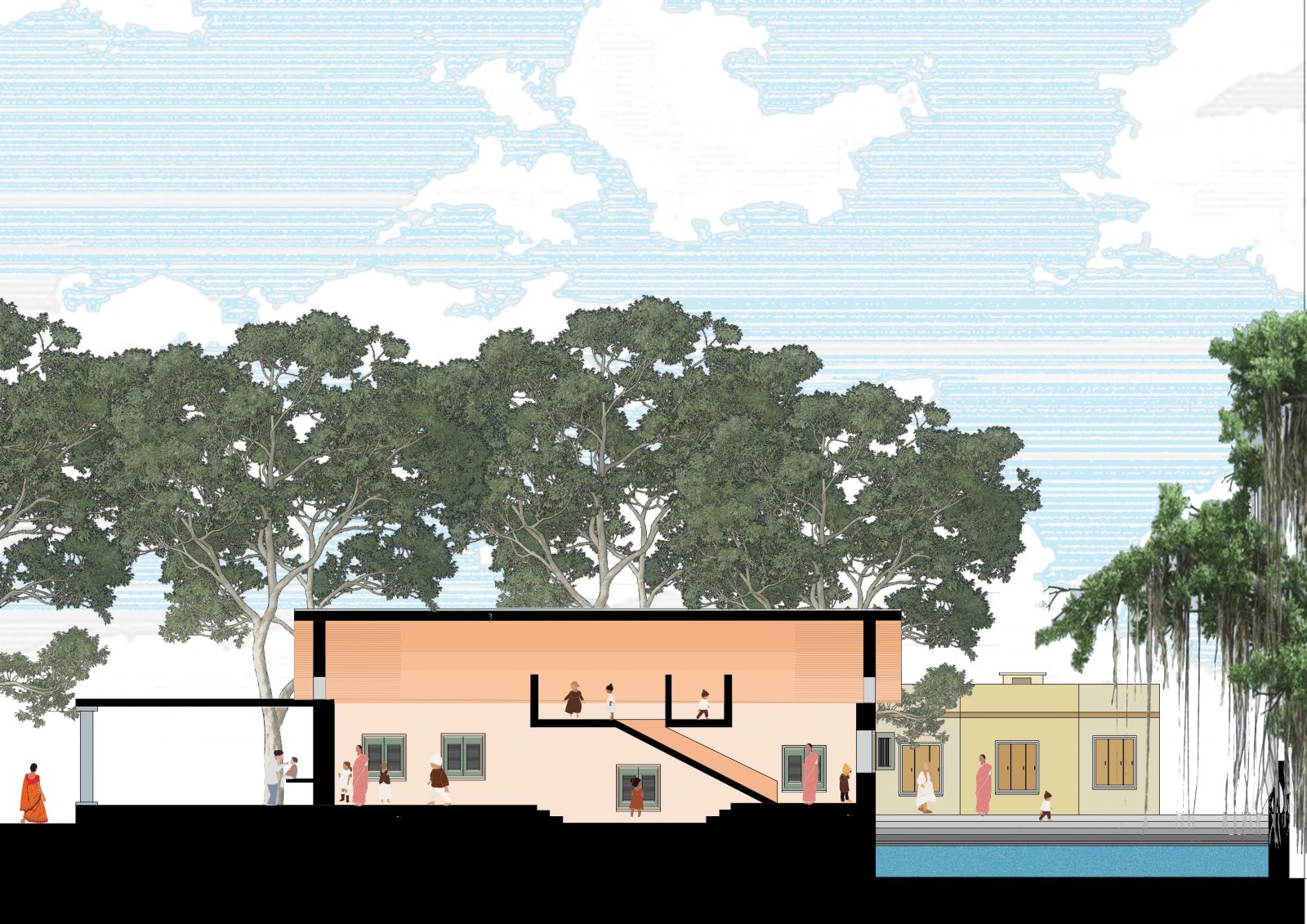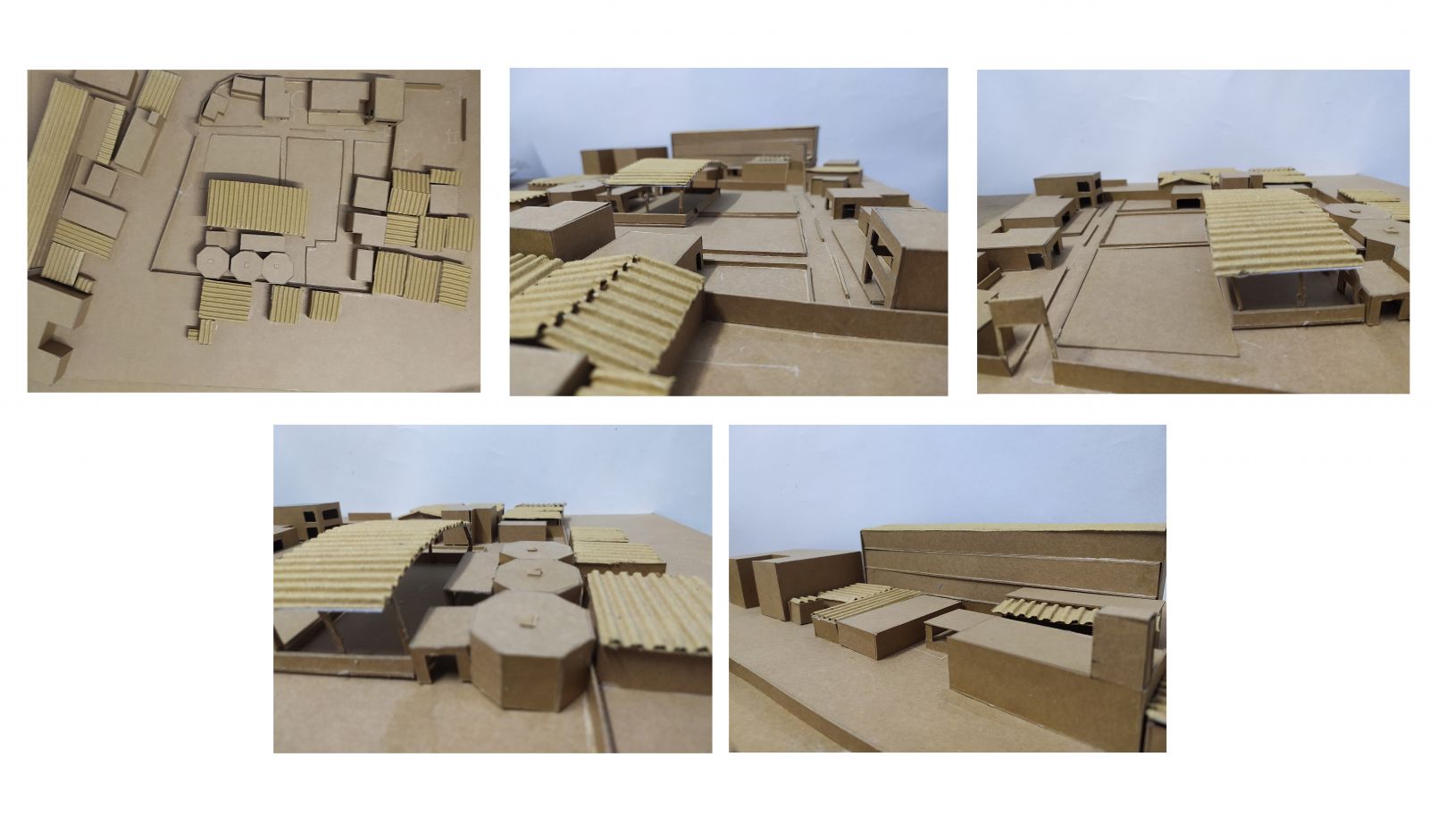Your browser is out-of-date!
For a richer surfing experience on our website, please update your browser. Update my browser now!
For a richer surfing experience on our website, please update your browser. Update my browser now!
This place enhances self-explanatory learning through architectural interactive elements. It stimulates a child’s senses to explore by creating curiosity. The place and its roofing and ceiling type give a feeling of beginning in a cave. The cave-like interior spaces have different areas at different plinth levels like a space for art and craft, space for imaginative plays, space games for puzzles, and constructive games. These different spaces contribute to children's development Like for psychological development, children use their senses on interactive architectural elements. For example, children play on walls where they have to place toy animals on assigned walls, so here children use the senses of touch, hearing, and sight. This use of the senses increases the efficiency of learning and cognitive skills. Her children also developed physical and social abilities through interactive architecture elements Where physical activities and moving things developed a physical ability and by doing activities with other children on common architecture interactive elements They also gain social abilities.
